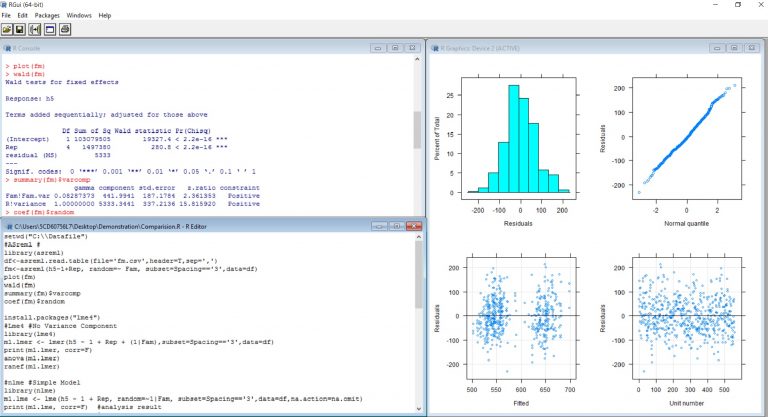
This is problematic, because datasets with too few individuals preclude the inclusion of too many random effects in an animal model ( Kruuk 2004) and have been shown to be problematic for the estimation of dominance variance ( Misztal 1997). Also, studies of wild organisms typically have low numbers of individuals in a population, especially compared to the millions often handled in animal breeding.

This could be, in part, because non-additive genetic effects are assumed to be of little importance in predicting the evolutionary trajectory of moderately sized wild populations ( Fisher 1958). Hoeschele 1991 Tempelman & Burnside 1991). Non-additive genetic variances are seldom, if ever, estimated in ecological and evolutionary analyses (but see, Crnokrak & Roff 1995 Waldmann 2001), although the fields of animal and plant breeding have been estimating these genetic variances for over two decades (e.g. the pedigree) then the above genetic variances can be estimated in an animal model. If one knows all the relationships in a population (i.e. The additive, dominance and epistatic genetic variances are proportional to the probability that individuals share alleles identical by descent at the same locus, for both alleles at the same locus, or for alleles at different loci, respectively. The non-additive genetic variance can be further subdivided into dominance and epistatic variances. The phenotypic variance of a quantitative trait can be broken down into additive genetic, non-additive genetic and environmental sources of variation. Further, solutions to the animal model may be obtained using Likelihood or Bayesian approaches (further information in the Supporting Information Relatedness matrices in the animal model section and detailed descriptions of the animal model can be found in Lynch & Walsh 1998 Sorensen & Gianola, 2002 Kruuk 2004 Mrode, 2005). Response variables in animal models may be univariate, multivariate, Gaussian or non-Gaussian.
#ASREML R FULL#
Using the similarity among relatives to elucidate the underlying genetic basis of phenotypic variation at the population level, the method (1) enables researchers to control (or study in and of themselves) confounding factors because of environmental or other non-heritable sources of similarity between relatives, (2) simultaneously utilizes additional relationships beyond parent-offspring or half- and full siblings in the estimation of genetic parameters, thereby increasing the types of populations and organisms able to be studied and (3) is unbiased to selection within a population ( Lynch & Walsh 1998 Kruuk 2004). A major advance for the study of quantitative trait evolution in wild populations was precipitated by the adoption of the ‘animal model’, a mixed effects model with a long and proven history in the animal breeding sciences ( Henderson 1984 Lynch & Walsh 1998 Kruuk 2004).


 0 kommentar(er)
0 kommentar(er)
